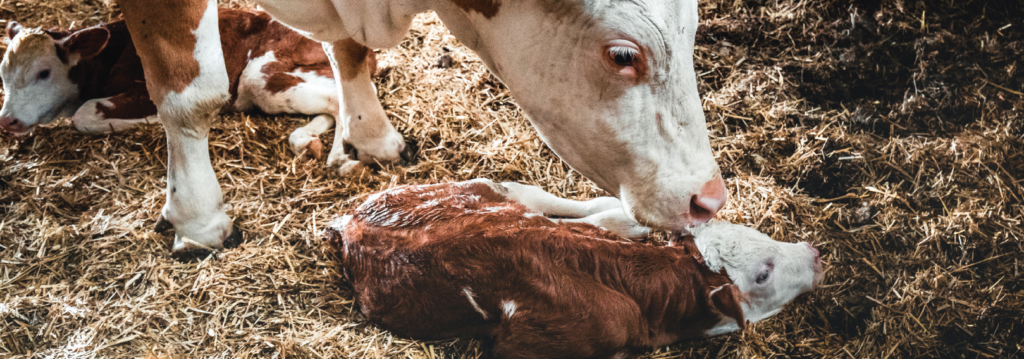Pulling a calf is never easy and typically leaves you, the cow and the calf stressed and exhausted. Sometimes it’s frustrating that those calves you rescued end up being the most likely to get sick and perform poorly. Why might that be?
These dystocia calves may suffer from a wide range of problems following a difficult calving, including injury and pain from rib fractures and compression of the skull in the birth canal, acidosis from an inability to regulate respiration, and a reduced ability to maintain a normal body temperature. When calves are suffering from trauma and pain after a difficult calving, they are less motivated to stand and suckle. In recent studies, calves born following calving difficulty were more acidotic and took longer to stand, compared to calves born unassisted. If the calf is not able to get up in a timely manner following birth, this may lead to a delay in colostrum intake.
Furthermore, the effects of calving difficulty on blood pH have been shown to impair immunoglobulin absorption. Calves suffering from acidosis following birth may not absorb immunoglobulins as efficiently as calves with a normal blood pH. Additionally, dystocia is more common in first-calf heifers. Heifers have poorer mothering instinct and produce less colostrum than mature cows. So, if the calf is less likely to stand to nurse in addition to a lack of colostrum and care from the dam, those calves are at major risk of failure passive transfer.
Ensure a strong, healthy start for your assisted calves by feeding them a full replacement of Colostrx immediately after birth. If your calf is born at the vet clinic, feed it before you load the trailer, so your calf can start absorbing antibodies and replenishing energy before you even get home. We recommend feeding two bags of Colostrx CR since these calves are severely energy-depleted and stressed.
